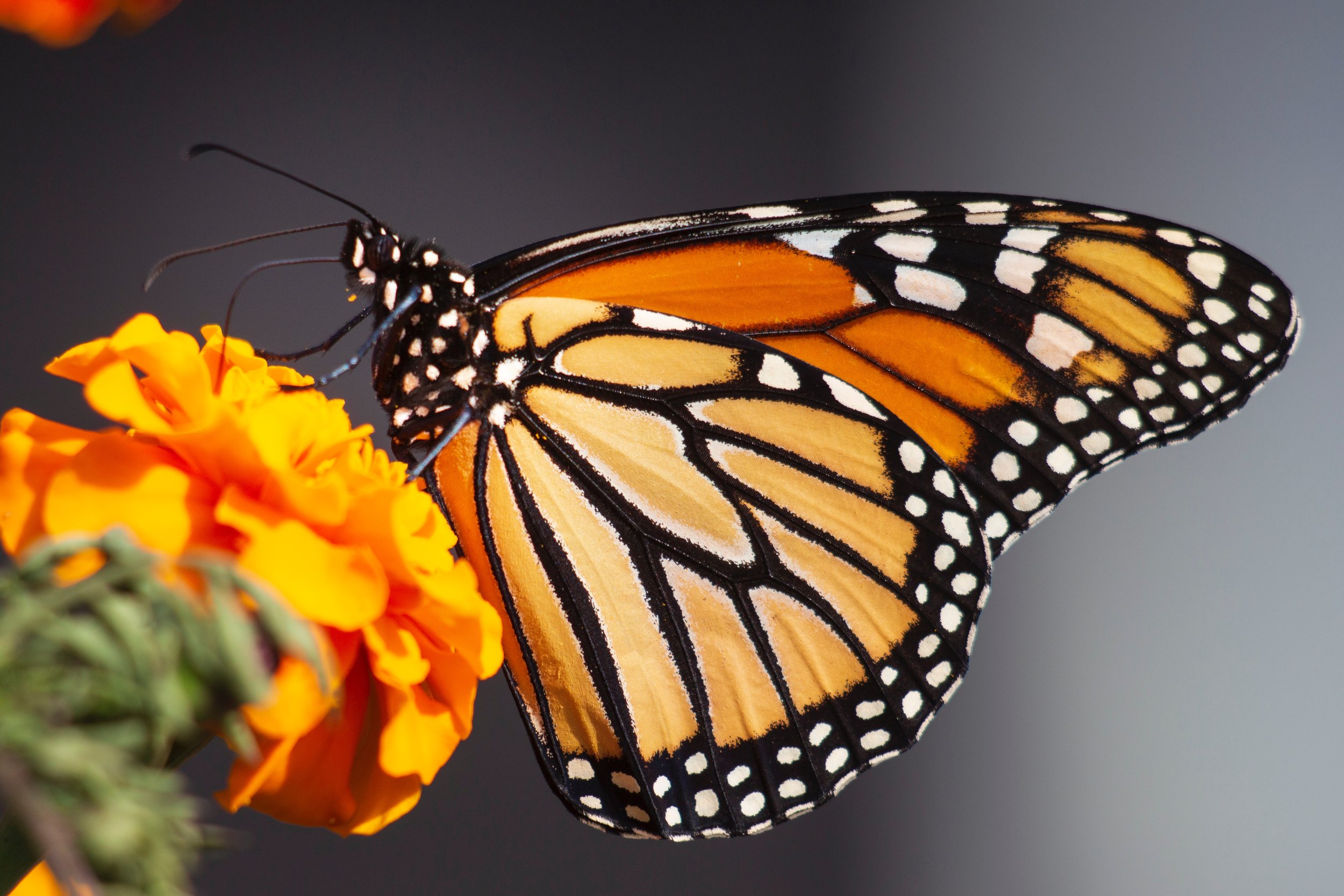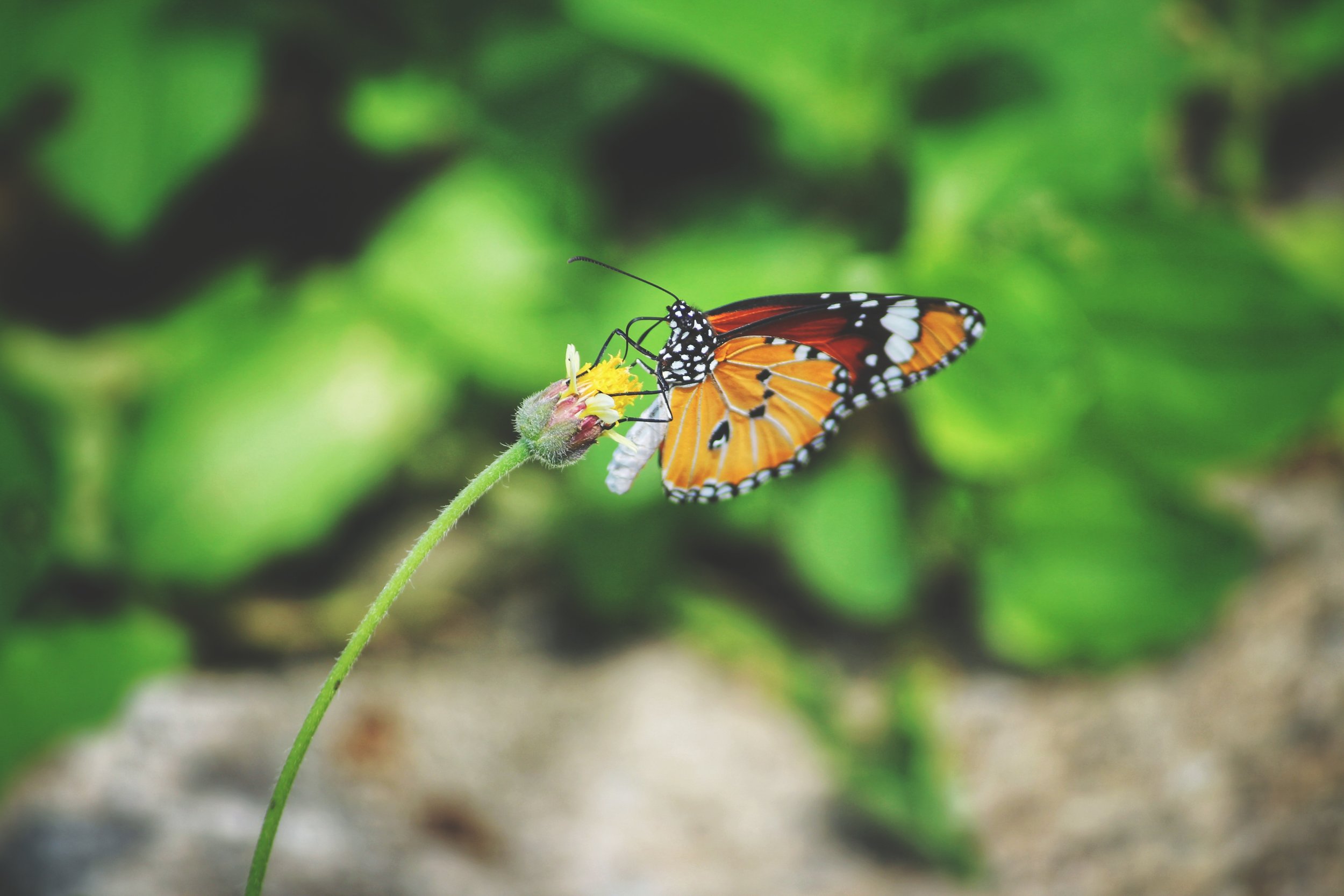11 Facts About Monarch Butterflies
Monarch butterfly by Kyle Glenn
Jamaica is home to 136 butterfly species including the Monarch butterfly.
Read below for facts on Monarchs.
1. Monarch butterlfies are one of the most popular known and easily identified butterflies.
2. Monarchs can be found in North America, South America, the Caribbean, Hawaii and Australia.
3. Other Monarchs such as the Caribbean Monarch and the Lesser Monarch can also be found in Jamaica.
4. Monarchs belong to the subfamily Danainae (Milkweeds & Monarchs), these butterflies lay their eggs on Milkweed plants which is later devoured by Monarch caterpillars.
5. Female monarch butterflies can lay up to 250 eggs per day.
6. Monarch caterpillars are capable of eating an entire milkweed leaf in five minutes.
Monarch Caterpillar by Sara Codair
7. Monarchs breathe through tiny openings in their bodies called spiracles.
8. Monarchs can see more colours than humans and can even see UV light.
9. A male and female monarch can be told apart by a black spot found on the inner surface of a male’s hindwing.
10. The bright colouration of Monarch butterflies warn predators that they are poisonous. Their bodies contain Cardiac Glycoside a toxin they ingested from eating Milkweed leaves.
11. Monarchs also benefit from Müllerian mimicry.
This is when species similar in appearance utilizes the same warning mechanism.
Monarchs, Queen butterflies and Soldier butterflies share the same bright colouration and carry the same toxin.
A predator that consumes a Queen butterfly will associate the same bad taste to a Monarch or Soldier butterfly and will not eat it. If it is eaten, the association between colour and bad taste is reinforced.



